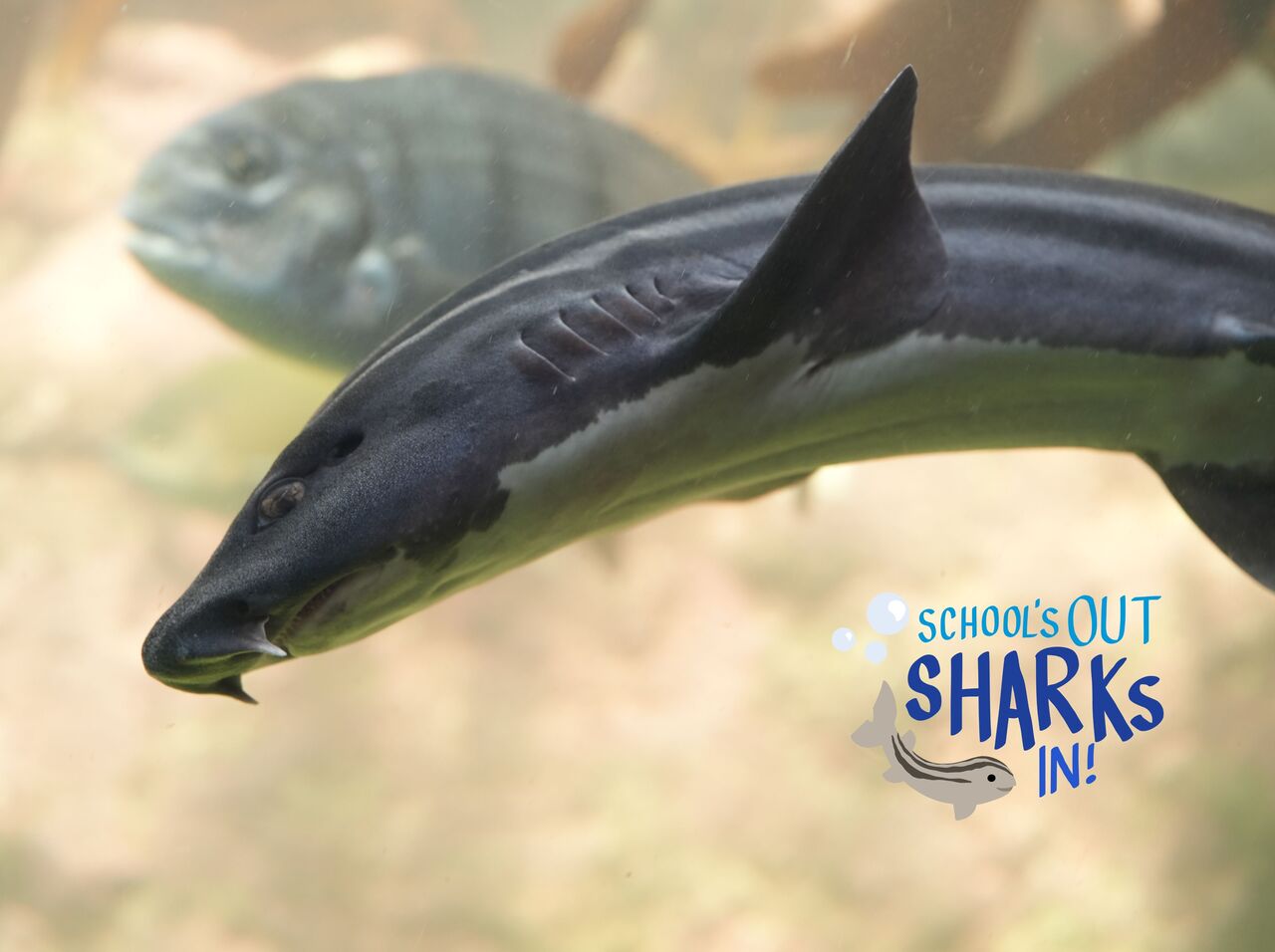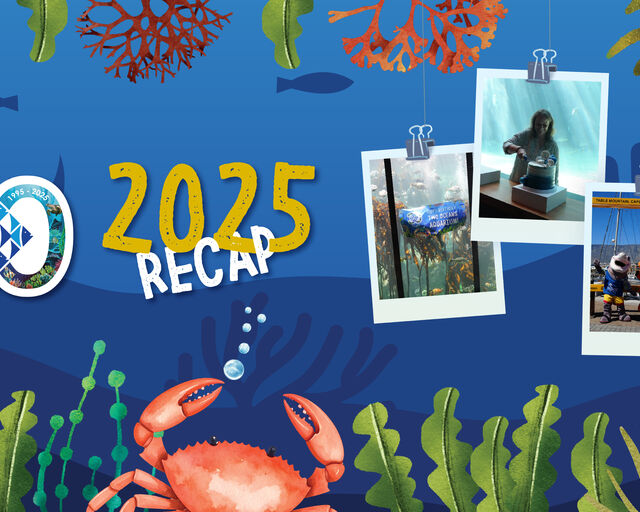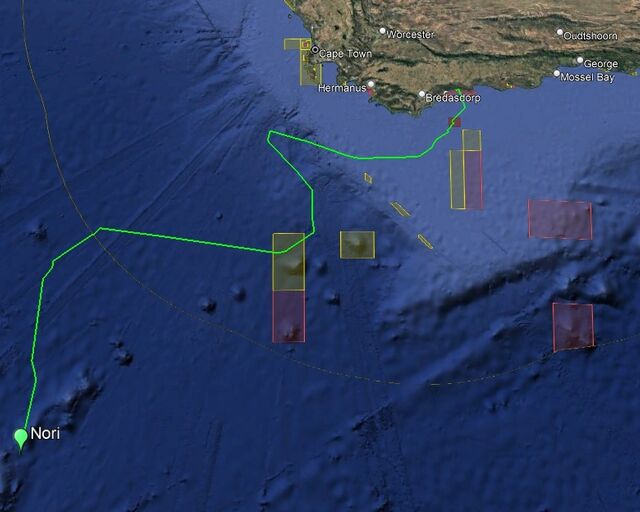School holidays may be over, but we're still diving into the incredible sharks at the Two Oceans Aquarium – big and small.
The Aquarium is home to a remarkable variety of shark species, many of them found only in South African waters. From the iconic ragged-tooth sharks cruising through the Save Our Seas Foundation Shark Exhibit to the elusive puffadder shysharks, visitors are offered a glimpse into the complexity and beauty of these misunderstood animals.
Today, we’re learning all about catsharks.
What are catsharks?
Catsharks belong to the largest shark family: The Scyliorhinidae. This enormous group comprises 105 species! While they range in appearance (from stripes to patches to spots) and habitat, catsharks can be identified by their elongated, cat-like eyes and small dorsal fins set far back on their bodies.
These cute sharks can be found in temperate and tropical seas worldwide, ranging from shallow coastal waters to depths of 2 000 metres. They typically inhabit quite small ranges within these areas and do not undergo annual migrations because they are poor swimmers.
Catsharks are most active at night, when they hunt for benthic invertebrates (animals that live close to the seafloor, like crabs) and smaller fish. During the day, many species of catshark tend to rest close together in crevices for safety.
These sharks are also the creators of the easily recognised “mermaid’s purses” that many beachgoers find washed up along the shore. Most species of catsharks lay tough egg cases with curly tendrils that anchor to the seabed. Inside these “mermaid’s purses”, catshark embryos will develop for up to a year before they hatch.
Other species of catsharks are ovoviviparous, meaning that eggs hatch within the mother’s body and are later birthed.
Let’s meet two of the catshark species at the Two Oceans Aquarium…
Meet the leopard catshark
Leopard catsharks (Poroderma pantherinum) are named for their distinctive pattern – they’re rosettes, just like a leopard. They can be further distinguished from other catsharks by the absence of the groove which joins the mouth to the nostrils.
They also have long barbels that project downwards from each nostril – these are sensory organs that help the catsharks to locate food along the seafloor.
These spotty sharks are endemic to South Africa, found along the coastline from Saldanha Bay to the Thukela River. In the Eastern Cape, leopard catsharks live at depths of up to 250 metres, but the populations in the southern and western Cape prefer shallower coastal waters.
Leopard catsharks grow to nearly 90cm in length and feed on small, bottom-dwelling fish, crustaceans, and squid. They are listed as of least concern on the IUCN’s Red List of Threatened Species.
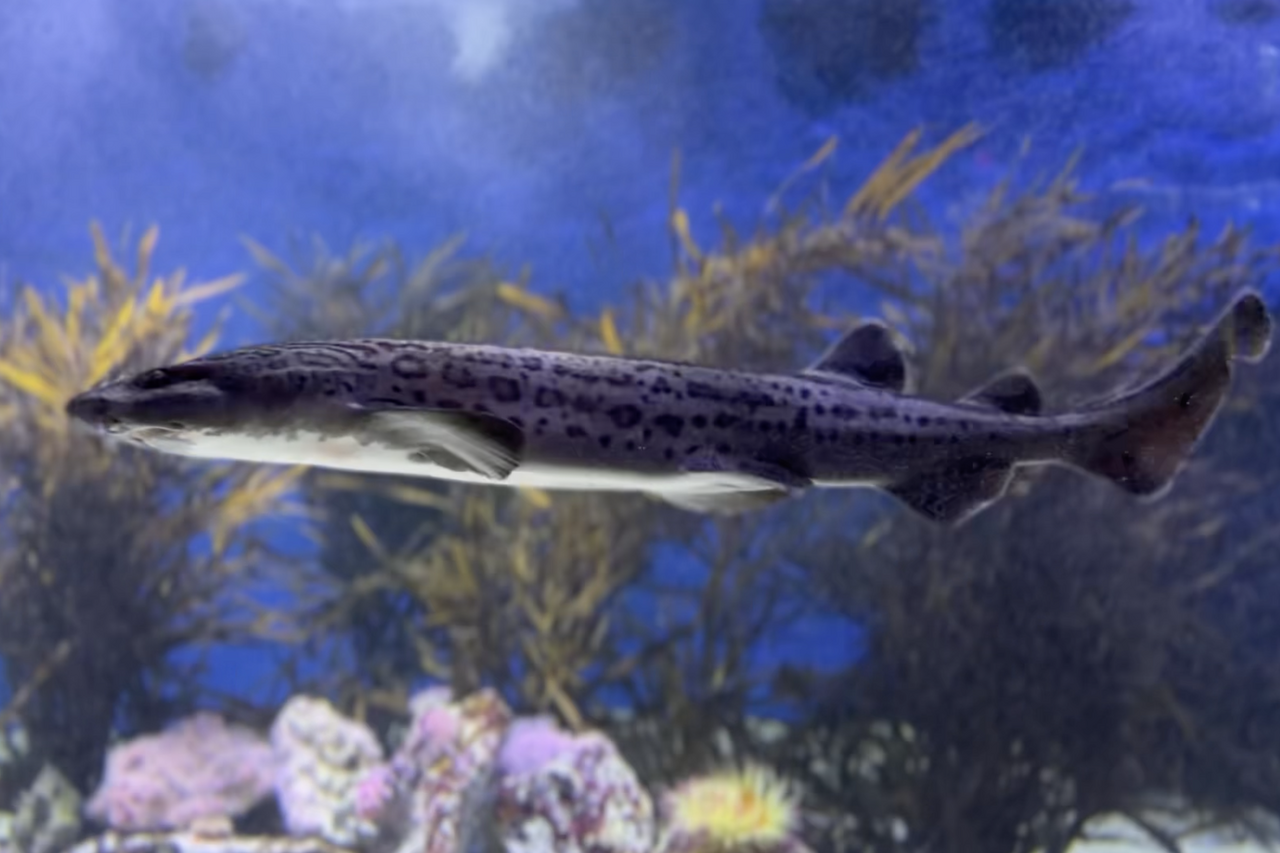
Meet the pyjama catshark
Pyjama catsharks’ (Poroderma africanum) stripy pattern is unmistakable – they look just like a pair of pyjamas. These sharks have sleek, compressed bodies with dainty barbels. They grow to just over a metre and are estimated to live for up to 21 years!
Pyjama catsharks feed at night on a variety of prey species, including anchovies, gurnards, hagfish, smaller sharks and rays, crabs, squids, and worms. In False Bay, pyjama catsharks are often seen eating Cape rock lobsters and fish offal. When chokka squid spawn, pyjama sharks gather in droves around the squid egg beds. They use their stripes as camouflage, sneakily ambushing female squid as they lay their eggs.
Interestingly, these sharks employ a special spinning manoeuvre, like a crocodile’s “death roll”, to stun and dismember their prey.
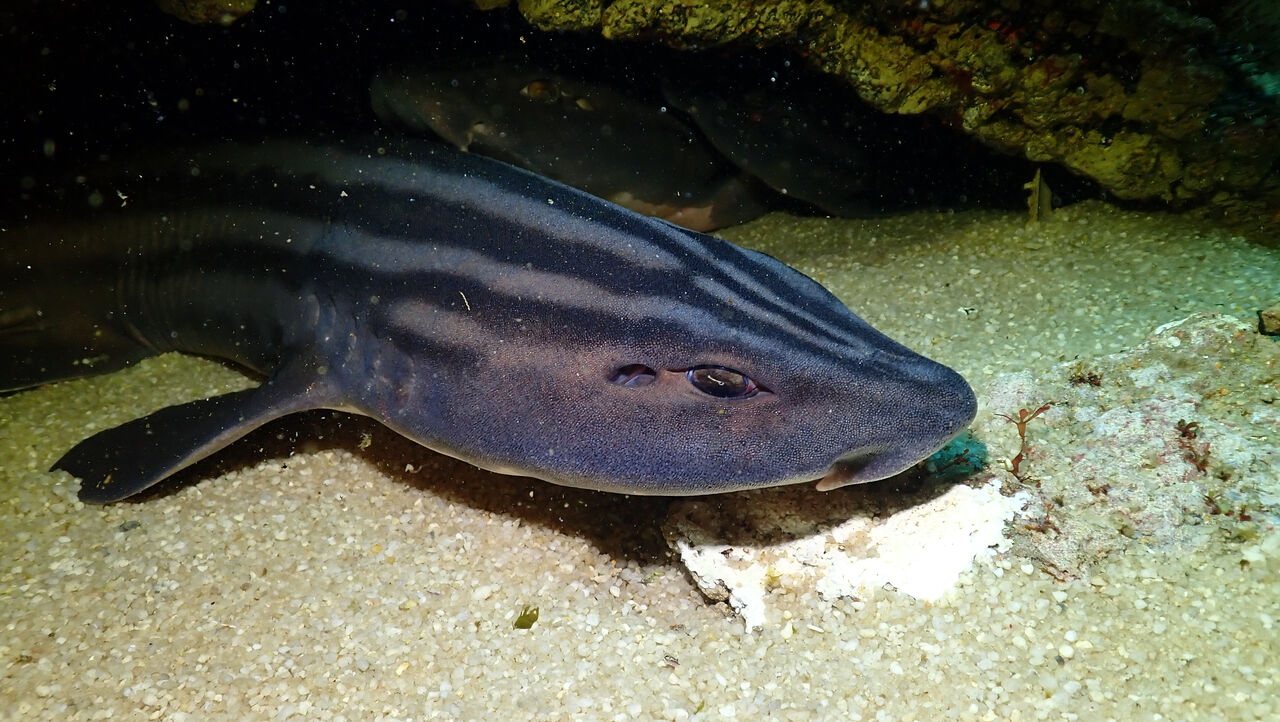
Pyjama catsharks are listed as of least concern on the IUCN’s Red List of Threatened Species, but are often caught as bycatch or discarded by fishermen who view them as pests.
All species of catshark are unique in appearance and the roles they play in their ecosystems. Come visit the Two Oceans Aquarium and learn more about catsharks!
Related News
Sign up to our Newsletter
Receive monthly news, online courses and conservation programmes.
